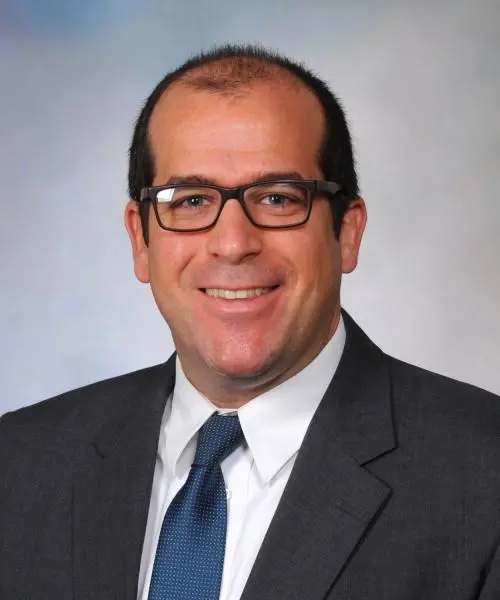Main Session

Sep
29
PQA 03 - Central Nervous System, Professional Development/Medical Education
2673 - Preoperative Radiosurgical Boost in Newly Diagnosed Glioblastoma
Presenter(s)

Daniel Trifiletti, MD - Mayo Clinic, Jacksonville, FL
D. M. Trifiletti1, B. I. Fernandez-Gil2, J. P. Navarro-Garcia de Llano2, L. Michaelides2, M. Ulloa Navas2, A. N. Basil2, K. M. Lane2, A. C. Harrell2, L. E. Haydu2, S. Herchko1, W. J. Sherman2, J. L. Peterson1, and A. Quinones-Hinojosa3; 1Department of Radiation Oncology, Mayo Clinic, Jacksonville, FL, 2Mayo Clinic, Jacksonville, FL, 3Department of Neurological Surgery, Jacksonville, FL
Purpose/Objective(s): In this first-in-human, investigator-initiated, open-label study, we evaluated the safety and feasibility of preoperative stereotactic radiosurgery (preopSRS) in patients with newly-clinically-diagnosed high-grade glioma (HGG). Based on our preliminary murine model and clinical experience in brain metastases, we hypothesized that preopSRS would be feasible, safe, and potentially enhance tumor control by earlier irradiation in a more favorable tumor microenvironment for SRS. Materials/Methods: Seven patients underwent stereotactic biopsy, preopSRS, surgical resection, and then standard adjuvant chemoradiotherapy (SOC). Four additional patients elected SOC without preopSRS, and 401 patients treated with SOC for newly diagnosed glioblastoma at our institution (2014-2023) served as historic controls. Results: Our results indicate that preopSRS is a feasible and safe intervention, with all patients completing the prescribed course and no early trial-related adverse events (1 of 7 preopSRS patients developed late radionecrosis, possibly related to preopSRS). All enrolled patients had presumed HGG, and clinical characteristics were similar across cohorts, including multifocal tumors. All patients were receiving steroid therapy at the time of enrollment. PreopSRS reduced rapid early progression (REP) compared to enrolled and historical controls (p<0.05), resulting in improved local progression-free survival after enrollment (PFS, p<0.05). This suggests that earlier, more comprehensive therapy can potentially shift the natural pattern of failure by reducing REP, improving this significant clinical challenge and established poor prognostic factor. In addition, preopSRS led to notable changes in the local tumor microenvironment. Tumor displayed a less senescent profile (lower TGF- ß expression) in the preopSRS vs. SOC. Gene Set Enrichment Analysis (GSEA) comparing the untreated biopsy specimen vs. the resected tissue in the preop SRS group revealed enrichment of G2M checkpoint (FDR=0.001) and E2F (FDR=0.003) pathways, associated with improved immune-infiltration and radiosensitivity. Peripheral blood samples collected at 4 timepoints, including longitudinal CyTOF analysis indicated increased circulating CD4+ and CD8+ T-cells post-SRS. PreopSRS appears to enhance both local and systemic immune activation in GBM patients despite concurrent steroid therapy. Conclusion: Our findings provide first-in-human evidence that preopSRS could complement standard treatment by ‘boosting’ local immune responses and improve systemic immunity. This strategy offers a triple benefit by hastening time to therapy, intensifying it, and providing insights into GBM biology at the patient-specific level. Given these favorable interim safety/feasibility results, the trial has been modified to allow dose expansion, and later: larger patient cohorts, particle therapy, radioimmune-modulators, and extended follow-up. Clinical Trial number: NCT05030298.
